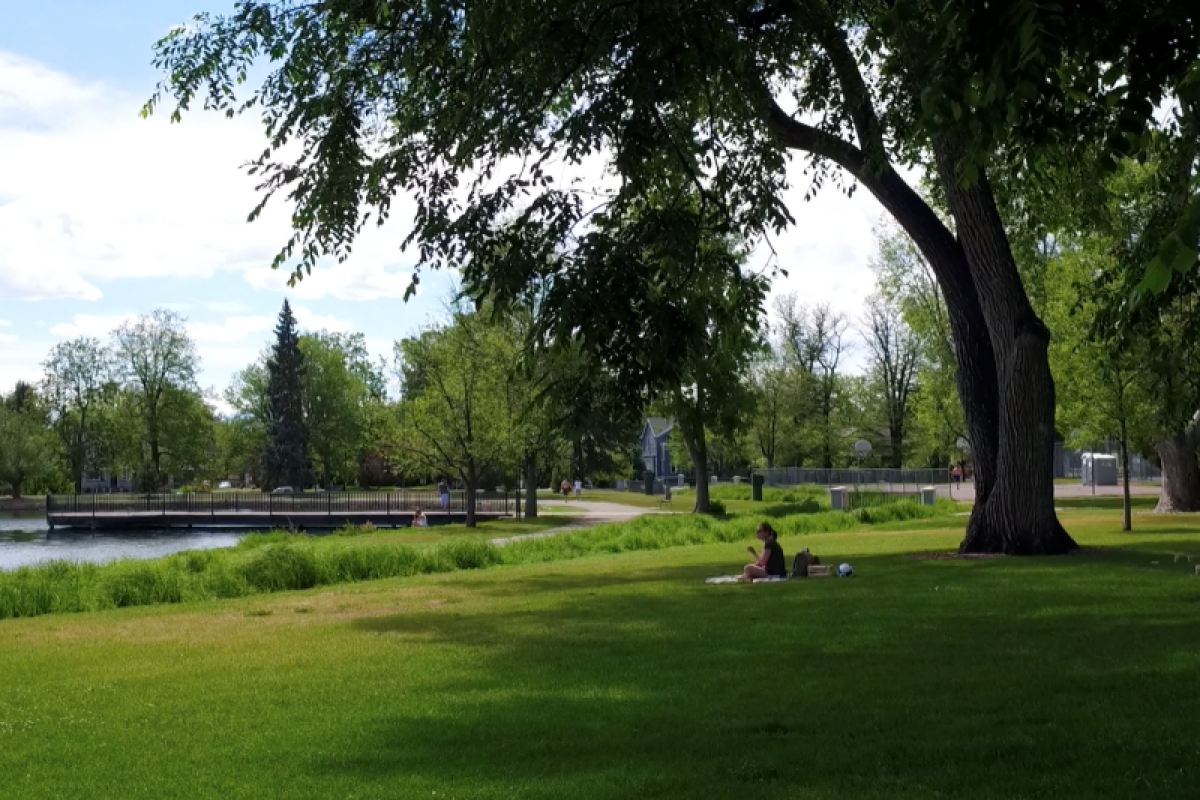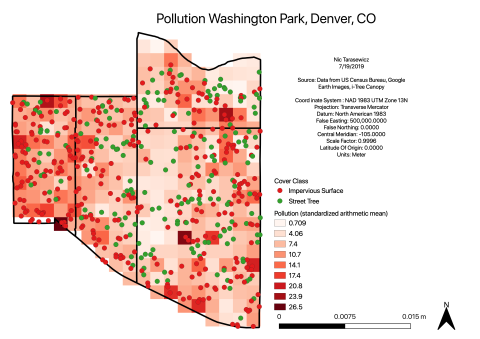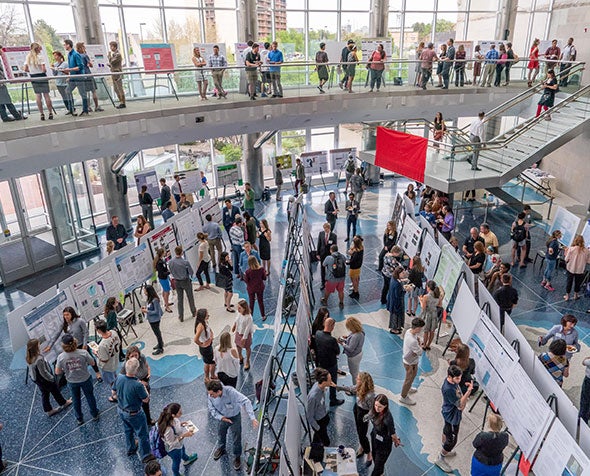Undergraduate Research Keeps Campus Thriving During Summer Months
Geography major Nic Tarasewicz examines effect of street trees on pollution

The University of Denver is a different place come summer.
That early-fall, first-day-of-school energy is missing, like the wind out of DU’s sails. But you don’t have to look hard for a puff of energy. Camped out in pockets across campus, undergraduate researchers are keeping DU’s flame lit.
Geography major Nic Tarasewicz is one of 50 students whose academic spark kept burning through the toasty months, funded by the Undergraduate Research Center’s summer grant program. The program gives students the funds to pursue passion projects with the help of a faculty advisor. While Tarasewicz was busy examining the intersection of urban street trees and pollution, physics major Stella Yoos was investigating the nature of Wolf-Rayet binary stars. Criminology major Oscar Lama, meanwhile, was examining media covering of juvenile crime and immigration.
For Tarasewicz, the opportunity to determine whether neighborhood street trees have an effect on local pollution levels was an essential cap on his time at DU before he heads to Sweden’s Lund University as DU’s first geography student to participate in its Global Masters 3+1+1 program. There, he’ll wrap up his undergraduate degree and complete a master’s degree as well.
“This has been a good way to go back through, use a lot of the skills I’ve learned throughout my degree and actually be able to apply it in a research system,” Tarasewicz says. “I am interested in pursuing my master’s in physical geography … so it was a nice way to wrap it up. It’s been my first real-world research project.”
Tarasewicz conceptualized his project as a way to combine a number of interests: geography, sustainability and the outdoors. While much work has already been done to show the correlation between increased street trees and pollution mitigation at the city and state level, Tarasewicz wanted to investigate it on a finer scale to further highlight the importance of green space.
He chose Denver’s Washington Park and Park Hill neighborhoods for a healthy comparison. The tony Washington Park neighborhood was built to congregate Denver residents around a green, tree-capped park. Park Hill on the other hand, has abundant green space but fewer street trees. And Park Hill’s primary open space, a large golf course, was recently purchased by a developer who is considering eliminating 50% of it.
Using Landsat images, a software suite developed by the U.S. National Forest Service, and pollution data from the Environmental Protection Agency’s monitoring sites, Tarasewicz collected information for 701 different points in each neighborhood to draw his conclusions.
“For pollution, there was a very, very strong positive association between the two, even on the neighborhood scale. More street trees means less overall urban pollution,” Tarasewicz says. This outcome, he says, illustrates the need to ensure homogenous street tree distribution on a smaller scale, as a citywide approach might create disparities by clustering trees in some areas of a city, but not others.
The outcome was expected, but Tarasewicz says it points to a greater imperative to incorporate nature into urban ecosystems, especially as Denver’s population density continues to boom. During his literature review, Tarasewicz noted benefits of street trees beyond just natural pollution filtration, including respiratory health, greater sense of security, lower cortisol levels and increased physical activity. As a bonus, he says, street trees are an easy solution, as they are much simpler to add to a neighborhood than new green space like a park.
And with a development that threatens to eliminate 50% of Park Hill’s green space, Tarasewicz’s research is timely. He hopes to write an article for the neighborhood’s newspaper in an effort to share his findings with the already-active community.
This is the real power of undergraduate research, says DU professor Erika Trigoso Rubio, Tarasewicz’s research advisor.
“We know this is a detriment to the neighborhood, but how do you make it real for people and for developers? This is where work like Nic’s has a very important role,” she says. “He created maps; he quantified the issue; he drew very important conclusions in regards to pollution. We are going to lose a lot if this area is developed. This is something that we [can use] to show people what will happen if we don’t do something about it.”









